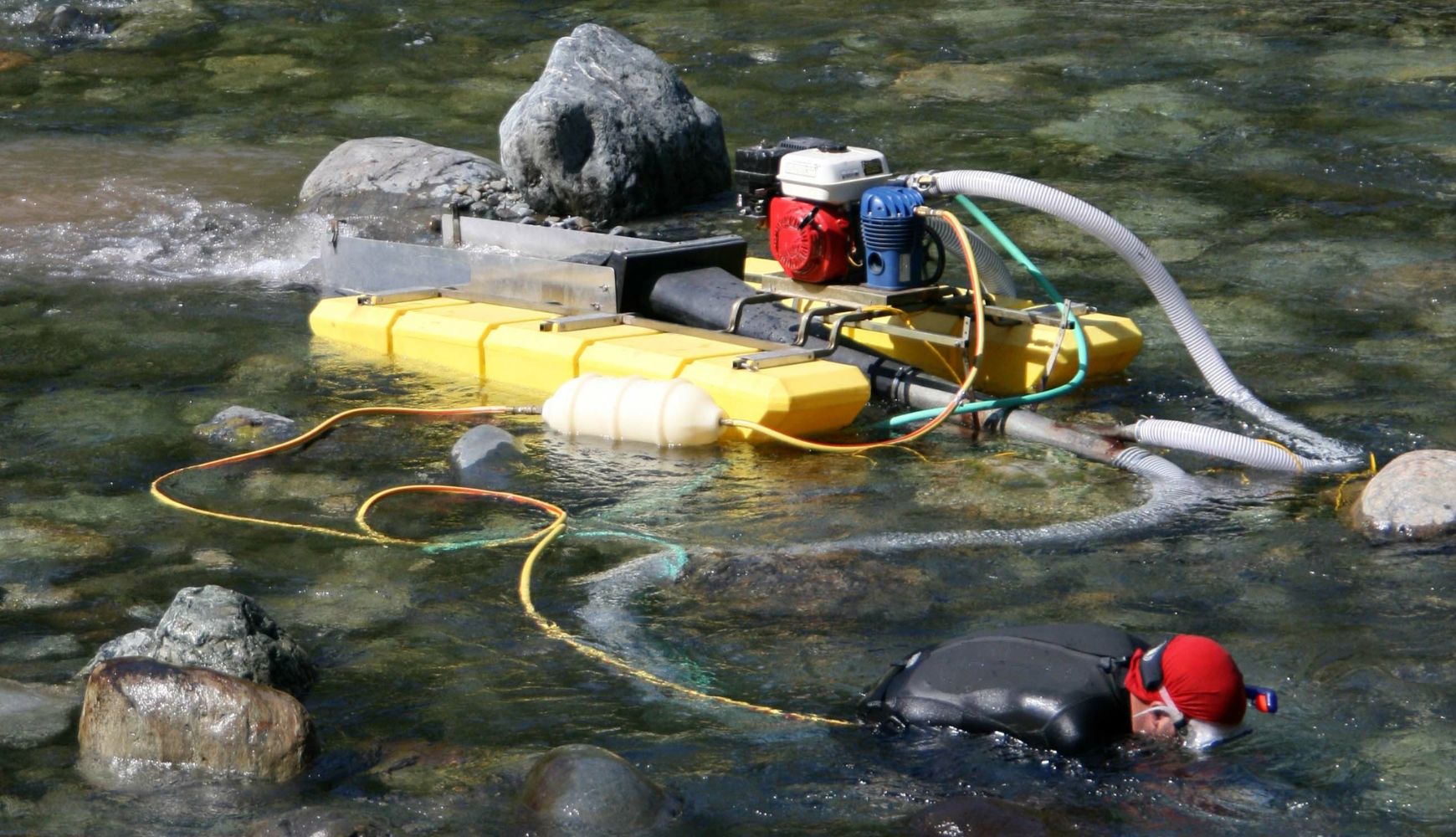
How Does a 4-Inch Suction Gold Dredge Work?
Gold prospecting has a long and storied history. While the gold rushes of the 19th century may be long gone, hobbyists still look for gold in river deposits and gravelly banks. Thankfully, the methods used for finding that gold have advanced far beyond simple panning by hand!
A suction dredge is a powerful tool used by many prospectors to sift through shallow waters in search of gold. Whether you’re a seasoned prospector or starting a brand-new hobby, you’ve probably heard about suction dredges before.
Wondering how 4-inch suction gold dredges work? Look no further than Northwest Detector’s handy guide to the suction dredging process. Let’s learn more about the parts of a suction dredge that make it so powerful, and how they work together to find gold in gravel.
The Anatomy of a 4-Inch Suction Dredge
Suction dredges come in a variety of sizes; let’s look at the popular 4-inch variety. Suction gold dredges work similarly to high-powered vacuum cleaners, but with a few extra steps to filter out the gold you’re after.
4-Inch Suction Hose
The diameter of your dredge’s suction hose ultimately decides how much gravel and water you can suck up into your dredge. A 4-inch model is popular due to its combination of portability and high capacity—these babies can vacuum up a great deal of gravel!
When water, gravel, and gold are sucked up through the suction hose, everything makes its way in the direction of the water pump and the header box.
Header Box
The header box of a dredge is attached to the sluice and is designed to dampen the water flow so as not to overwhelm the sluice. This is where the gravel goes to be sifted through the riffles of the sluice, leaving only gold behind.
Engine and Pump
Your suction dredge’s engine is powered by gasoline to maintain suction and keep all the parts moving. A single gallon of gas can last upwards of four hours!
The pump is powered by water—the same water that you vacuumed up along with the gravel and other materials on the ground. Gravel and gold concentrates are diverted to the header box and sluice so they don’t jam up your pump.
Sluice
Let’s go back to the gravel and other materials you’ve suctioned up. After it passes through the header box, it move on to the sluice, where gold nuggets are separated out from regular gravel and rocks.
Sluices contain a series of riffles that makes this separation easier. Many suction dredges utilize a three-stage recovery system:
- Stage one, or primary recovery, traps larger gold pieces in the riffles. These gold pieces are easy to see and pluck out.
- Stage two, or secondary recovery, grabs smaller, coarser pieces of gold that may have been stuck in clay.
- Stage three utilizes a rubber damper to trap finer gold material and prevent it from being washed away.
Floats
Suction gold dredges are designed to be used in water, so they need something to keep the machinery afloat while you use the suction hose underwater! Dredges often boast four floats to keep the heavy stuff above the water line.
The 4-inch dredge pumps at Northwest Detector Sales are highly functional, with toolboxes and drink holders built right into the floats for your convenience. These floats also utilize bottom runners to keep your dredge safe from rocks and rapids in shallow water.
How To Use a 4-Inch Suction Dredge
Using a suction dredge for gold prospecting requires a little bit of setup, and you’d do well to have a companion with you to aid in the operation. This way, if one of you is underwater using the suction hose, the other can tend to the header box and sluice.
Let’s look at the dredging process in a series of steps.
Step 1: Prime the Pump
The pump on your suction dredge is designed for water, not air. Running it dry can cause the machinery to overheat!
Lower the foot valve below the surface of the water and thrust it back and forth. When you see water flowing out from the discharge end of your pump, that means it’s sufficiently primed. If your dredge has a rigid foot valve, remove the cap and let that valve fill completely with water.
Pro Tip:
Be careful not to let sand or gravel into your machinery during this step! Solid material can interfere with the functionality of your pump.
Step 2: Suctioning
Depending on the depth of the water you’re in, you may find it useful to wear diving equipment—or at least a snorkel. At minimum, you’ll want a well-fitting mask so you can see what you’re doing underwater.
Dip below the surface of the water and use the suction hose to bring gravel up through the dredge. It feels a lot like vacuuming! Keep your eyes peeled for larger rocks or any other obstructions that make their way toward your suction hose, and use your hands to get them out of the way.
Pro Tip:
Make sure you’re also sucking up water during this process to avoid overloading your sluice system with solid material.
Step 3: Watching the Sluice
As you suction up gravel and water below the surface, solids will enter the sluice by way of the header box. While seasoned prospectors with smaller dredges may leave the sluice area unattended, having a buddy with you is a good idea for a dredge of 4 inches or larger.
Most of the gold you’ll find will be separated out in the first stage. When the sluice system is finished processing all the material you’ve sucked up, you (or your buddy) will be able to see and pick up the gold nuggets left behind.
Tips for Suction Dredging
Looking forward to your next prospecting expedition with your 4-inch suction dredge? Use these tips to ensure that you have a productive day.
Tip #1:
Avoid jamming your suction nozzle deep into the gravel. You also want to suck up plenty of water to keep the dredge moving. Remember to keep the concentration of solids at 10 percent or less.
Tip #2:
Be wary of rocks! Even if the rock, shell, or other large solid fits into your suction hose without jamming it, get it out of the way. You want to suck up fine solids, not big chunks.
Tip #3:
Keep a roll of duct tape on hand to repair any tears or holes you see. You don’t want precious gold falling through a hole in your suction hose!
Thinking about using a suction dredge pump on your next prospecting excursion? It benefits you to know the ins and outs of how a 4-inch gold suction dredge works before you haul it out to your destination. Use the knowledge and tips provided by Northwest Detector Sales to ensure that you have a successful day looking for gold underwater!


